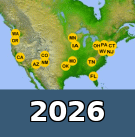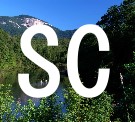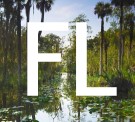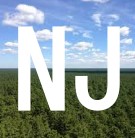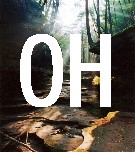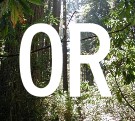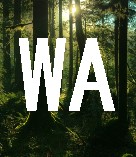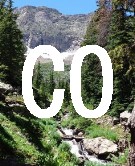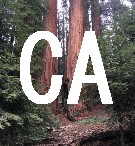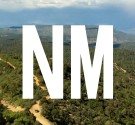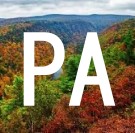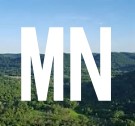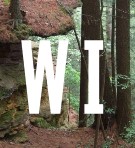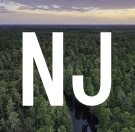|
Dates: May 17-20, 2007
Location: North Carolina. The county of the expedition will not be released,
at the request of the attendees who are returning to this area periodically.
The expedition suceeded in identifying a probable habitat zone. There
were several compelling incidents and observations during the expedition,
and there have been several compelling incidents and observations since
then, in this same area.
Number of expedition attendees: 36 from 10 states (NC, SC, VA, GA, WV,
OH, IN, NY, CA, FL)
Number of Class A sightings: 3 (all with hand-held thermal units)
Number of Class B sightings: 10 (5 sound-only & 5 low-light sightings)
Number of video clips of sasquatches obtained on this expedition: 0
Number of audio clips of sasquatches obtained on this expedition: 1 very
good recording of a series of loud signaling knocks; 2 other less compelling
recordings
If you would like to lend assistance to this effort and/or meet the other
BFRO investigators in this general part of the country, you will need
to register for the next public expedition in this region -- the BFRO's
South Carolina in November 2007.
If you would like to attend the South Carolina expedition (November 8-11,
2007), please send an email to south_carolina@bfro.net
See links below for individual notes from the attendees.

A Class B witness is one that either heard indicative sounds, or had an
unclear (obscured, unilluminated, fleeting, etc.) encounter/sighting.
These types of incidents have occured on most of the expeditions, but
not without a lot effort probing many areas before sounds were finally
heard in a particular area. On some expeditions, incidents occured in
more than one area. On the NC 2007 expedition, incidents occured in four
(4) different zones, each a few miles apart.
Inevitably, whenever there have been Class A sightings in the course of
an expedition, more attendees have gotten to hear them than see
them. Although sounds recordings are not as dramatic as video footage,
they are easier to obtain, so more emphasis will be placed on obtaining
recordings of the sounds heard.
There has been consideration for the consequences of releasing the recordings.
The benefit of releasing recordings is that more people will recognize
their characteristic sounds. The primary risk in releasing recordings
has to do with the violent intentions of some people. Also, we've noticed
that certain areas which were previously reliable, in terms of sounds
responses, have become less reliable over time. Many people in the group
suspect the reason is desensitization -- the sasquatches have "gotten
wise" to our mimickery of their sounds, and have stopped responding
as reliably as they used to. Consequently, various BFRO members are urging
greater caution about what information is released, regarding locations
and techniques.
With regards to the 2007 North Carolina expedition, there have been return
trips to this zone by some of the attendees, and more Class A and Class
B incidents. At the time of this writing, another return is gearing up,
and equipment is en route to help obtain recordings and video footage.
The people conducting those return trips will relay their own observations
via our public message board, and take questions from the public. The
participants of each expedition have their own private message board to
confer and arrange future outings in the same area.
The publicly accessible record we seek to build are the observations of
behavior and habitat/ecology, and audio recordings. Questions from the
public can too easily drift into issues of origins, policy, etc., which
are wide topics in themselves. That drift will be resisted because it
will tend to muddle a more basic log of observations and habitat information.
A few important habitat patterns, throughout North America,
relate to ungulate concentrations, rain, brush cover, and wind patterns.
Sounds/sightings of sasquatches occur most often in areas
with relatively high concentrations of wild, hoofed animals (deer, elk,
wild pigs, etc.). The number of wild, hoofed animals seems to be affected
by the amount rain, and the amount of brush cover, and the degree of protection
from wind. Wind taxes body heat, and creates noise
which makes it more difficult to hear predators approaching.
Reliably predicting where sasquatches will be requires
several layers of information. The most important layer is the local history
of sightings, footprint finds, etc. The next most important layer is the
local knowledge about ungulate herds. The dominant ungulate in North Carolina
is white tail deer (Odocoileus
virginianus).
This factor is so crucial to figuring out where sasquatches will be, that
BFRO expeditions will often focus on deer first, as the way to find the
sasquatches in a given region. We anticipate that future research will
prove, or at least strongly suggest, that the culling of natural predators
to deer (and other ungulates) -- predators such as cougars and wolves
-- led to a population increase of ungulates in many parts of the country.
That population increase of ungulates created a bounty for predators that
were more adaptable to sharing forest environments with humans, namely
coyotes and sasquatches.
On the 2007 NC expedition, only a few deer were seen on the first few
days. Then on Saturday night some attendees were driving to a location
a few miles away when they spotted a huge herd of deer crossing the highway.
This was unusual because a local outdoorsman told us the deer would be
more dispersed in May and would typically herd up in Fall before the rutting
season. The herding of the deer in Spring may have been a response to
pressue from shadowing predators.
Notes from Various Attendees:
Notes from Tommy Poland
(North Carolina)
Notes from Jerry Adair (Georgia)
Notes from Patty Lee (South Carolina)
Notes from Matt Pruitt (Georgia)
Notes from Chris Peterson (Virginia)
[More notes are being added]
|
|

